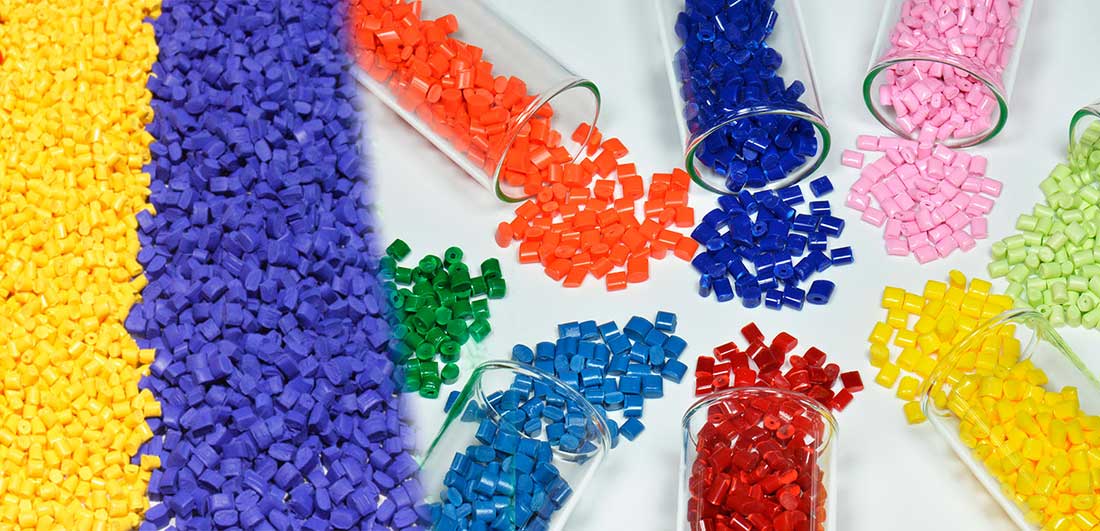Plastic Compounds in Industry

What is compound in plastic industry
In the plastic industry, a compound refers to a material made by combining two or more different substances to create a new, customized material with specific properties. These substances are typically polymers, additives, and other components that are mixed together during a compounding process. The goal is to enhance or modify the characteristics of the base polymer, such as its strength, flexibility, flame resistance, color, or other attributes, to suit the desired application. Compounders play a crucial role in creating various types of plastic compounds for diverse industries.
In the plastic industry, the compounding process involves several steps:
- Selection of Base Polymer: The first step is choosing the base polymer, which can be a common plastic like polyethylene (PE), polypropylene (PP), polyvinyl chloride (PVC), or others.
- Additives: Additives are incorporated to modify the properties of the base polymer. These can include colorants, fillers, plasticizers, flame retardants, stabilizers, and more. Additives are carefully chosen to achieve specific characteristics in the final compound.
- Mixing and Extrusion: The selected polymer and additives are mixed together in an extruder, which combines them thoroughly. This mixture is heated and melted to form a homogeneous compound.
- Pelletizing: The molten compound is then typically cooled and cut into small pellets for ease of handling, storage, and transportation. These pellets can be used in various manufacturing processes to create plastic products.
- Quality Control: Quality control measures are in place to ensure that the compound meets the desired specifications and standards for the intended application.
Types of polymer compound :
- Polyethylene (PE) Compounds: PE compounds are widely used for applications like packaging, pipes, and various consumer products. They come in different forms, including low-density polyethylene (LDPE) and high-density polyethylene (HDPE).
- Polypropylene (PP) Compounds: PP compounds are known for their excellent chemical resistance and are used in packaging, automotive parts, and appliances.
- Polyvinyl Chloride (PVC) Compounds: PVC compounds are used in a wide range of applications, including pipes, cables, window profiles, and medical devices.
- Polystyrene (PS) Compounds: PS compounds are used in products like food packaging, disposable cutlery, and insulation materials.
- Polyurethane (PU) Compounds: PU compounds are versatile and can be used in applications ranging from foams and coatings to adhesives and elastomers.
- Polyethylene Terephthalate (PET) Compounds: PET compounds are commonly used for beverage bottles, food containers, and synthetic fibers.
- Acrylonitrile-Butadiene-Styrene (ABS) Compounds: ABS compounds are known for their impact resistance and are used in consumer electronics, automotive interiors, and toys.
- Nylon Compounds (Polyamide): Nylon compounds are used in applications requiring high strength and durability, such as gears, bearings, and textiles.
- Polycarbonate (PC) Compounds: PC compounds are used in products that require high impact resistance and optical clarity, such as eyeglass lenses, CDs, and automotive headlamp lenses.
- Polyethylene Terphthalate Glycol (PETG) Compounds: PETG compounds are commonly used in sheet and film applications due to their transparency, impact resistance, and ease of processing.
Application :
- Packaging: Plastic compounds are used to create a wide range of packaging materials, including bottles, containers, films, and bags. They offer properties like durability, flexibility, and barrier properties to protect and preserve goods.
- Automotive: Plastic compounds are used in automotive applications for components such as dashboards, bumpers, interior trim, and under-the-hood parts. They can provide lightweight and durable solutions.
- Construction: Plastic compounds are employed in construction materials like pipes, profiles, and insulation. They offer properties such as corrosion resistance, thermal insulation, and ease of installation.
- Consumer Goods: Many consumer products, from toys and appliances to furniture and electronics, use plastic compounds. These compounds can be customized for aesthetics, durability, and safety.
- Electrical and Electronics: Plastic compounds are used in the production of electrical connectors, casings, and insulating materials. They offer electrical insulation properties and flame resistance.
- Medical Devices: Plastics compounds are used in medical devices and equipment due to their biocompatibility, ease of sterilization, and versatility in manufacturing complex shapes.
- Aerospace: Plastic compounds are used in the aerospace industry for lightweight components and interior parts, where strength-to-weight ratios are essential.
- Agriculture: Plastic compounds are employed in agriculture for products like irrigation systems, greenhouse coverings, and durable equipment parts.
- Textiles: Plastic compounds are used in the textile industry to create synthetic fibers and materials for clothing, upholstery, and industrial fabrics.
- Recreation and Sports: Many sporting goods, such as tennis rackets, helmets, and recreational equipment, are made using plastic compounds for their lightweight and impact-resistant properties.
For more information on the product grades and data sheet, please feel free to contact us
